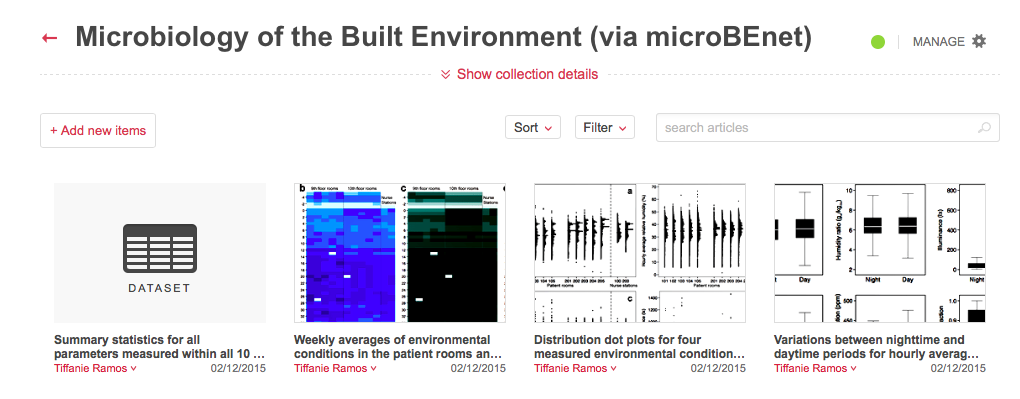I got an email the other day about a new feature at Figshare. It was about a new feature they have called “Collections“. But before I describe that I should probably describe Figshare. Figshare is a repository for depositing and sharing various digital objects including not just Figures (which they name kind of implies … ) but also data, papers, code, and more. It is a nice system and we have used it a lot in my lab and at microBEnet for various sharing activities.
Among the features I like:
- it is free
- one can share material openly
- one gets a Digital Object Identifier (DOI) for objects
- one can obtain metrics for objects (e.g., downloads, views)
- Figshare is integrated with a variety of journals and services (e.g., Orcid)
- and more …
If you want to or need to share some digital object it is a good place to consider.
Anyway – back to the Collections. This new feature allows one to group together a set of Figshare objects into a collection and the collection itself becomes a separate entity also with a DOI and tracking. I have lots of ideas for ways this could be used. But the first thing that came to mind was microBEnet. So I spent a little bit of time searching through Figshare for objects connected to microbiology of the built environment and I have put them together into a collection: Figshare Collection on Microbiology of the Built Environment. I then recruited Holly Ganz and David Coil (also part of the microBEnet team) to be curators of this collection.

So far we have 68 objects in this collection coming from studies by a variety of people and also including a variety of types of objects (data, code, slides, papers, and more). Please check it out. If you know of any other relevant Figshare objects please let us know. If you want to be a co-curator please let us know.